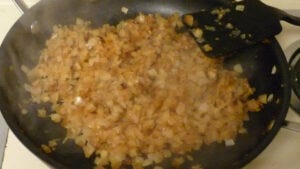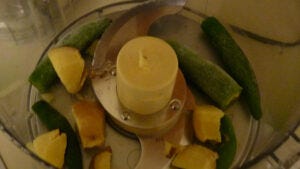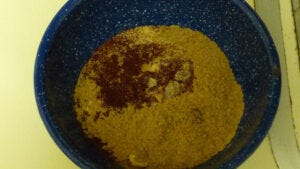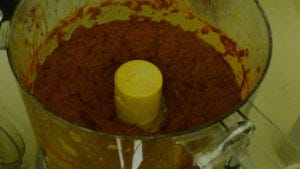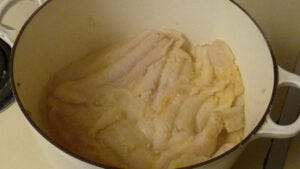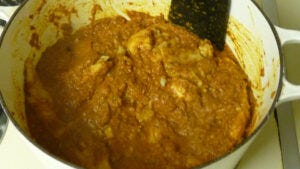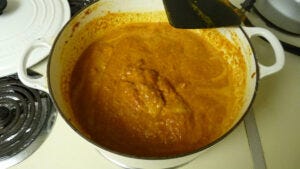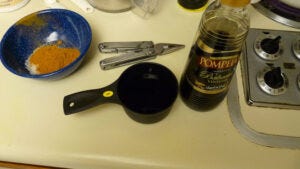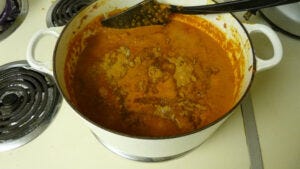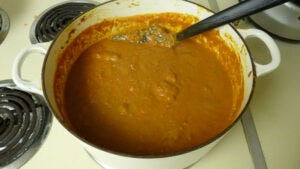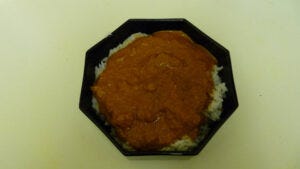Sunday Salutations and Anita’s Chicken Vindaloo
Our question this week is what sort of rejection letter you like as a writer? We love getting rejection letters, as opposed to waiting until the anthology is published to discover we were stealth rejected. The perfect rejection would be one that discussed our submission in depth, but that isn’t practical with the number of submissions places receive.
But we’ve seen two kinds of rejections. One is short and to the point. The other carries the same information – thanks but no thanks – but takes several minutes to read through as they usually try to soften the blow.
Do you prefer the short, quick rejection or the longer rejection letter?
And we have decided in November we will celebrate the Thanksgiving season by providing recipes every weekend. Because we are always thankful for good food and even more so for recipes that don’t contain items we have to avoid.
This weekend’s recipe is vindaloo. Vindaloo came up in recipe discussions on RPG groups I’m in. And we’re editing our novel, which features a chef, so recipes are on our minds.
This is Anita Jaisinghani’s Chicken Vindaloo recipe. Anita is Sindhi, a Hindu group which had to flee Pakistan. This means some of her touches are a little different from traditional India Hindu recipes. Anna and I had our wedding ceremony at her previous restaurant in Indika, and I learned this recipe from a cooking class Anita held years before I even met Anna. As you might have guessed I love Anita’s food! Anita’s current restaurant in Texas is Pondicheri ( https://www.pondicheri.com/ ).
If you go to her restaurant, she sells spices, spice mixes as well as her book ( https://www.pondicheri.com/store/product/masala-book/ ). She even tells you which vendors she gets her spices from, so that people replicate items at home. It still tastes better when they make it at the restaurant, such is the magic of a good chef. It is pretty darn close when we try it at home.
This is an older base version of her vindaloo recipe, as it was when she taught it nearly 20 years ago. Her recipes are exactly what she does in the restaurant.
Anna here! Tod tends to like items very strongly spiced. Both of us prefer the double strength chai or tizane. I tend to like the milder versions of other items. Garam masala mixes do vary a lot, so if you want Anita’s you will need to order it from Pondicheri. Garam masala is a spice mix of cardamom, cinnamon, cumin, cloves, and peppercorns. The mix can also contain other spices. It varies by region and family and can really change the character of a dish.
And back to Tod, with the recipe.
Chicken Vindaloo
Vindaloo Paste
2 Medium Onions, Sautéed Until Dark Golden
3 Cloves Garlic Sautéed
3 Whole Serrano Peppers
2 Inch Ginger
2 teaspoon Turmeric
2 Tablespoon Chili Powder
2 Tablespoon Ground Cumin
2 Tablespoon Ground Coriander
Grind all the ingredients into a smooth paste.
Chicken and Simmer Sauce
1 Chicken Whole Cut Up, Skinless
4 Tablespoon Oil
1/2 Can Coconut Milk
3 Tablespoon Tomato Puree
1/4 Cup Balsamic Vinegar
2 teaspoons Garam Masala
1 Tablespoon Salt
In a large stock pot, heat up the corn oil, and sauté the chicken in it until light golden on both sides.
Add the vindaloo paste and continue cooking for another 10-12 minutes at medium, covering halfway.
Now add the coconut milk and tomato puree and simmer for another 10 minutes.
Finally add the balsamic vinegar, garam masala and salt. Turn the heat off.
Now, here are step by step instructions, with pictures.
Step 1: Caramelize the Onions
We start with the vindaloo paste. I did the onions in a non-stick pan, but I cooked everything else in my big, enameled cast iron pot. (Pictures are from a high rise we lived in years ago. Our house has a gas range, which is awesome!) Anita says there are two ways to caramelize onions–either slowly and ignoring them or fast and paying attention.
Step 2: Process the Peppers and Ginger
Run the serrano peppers and ginger through the food processers. With peppers like serranoes and jalapenos, the more curved the pepper, the spicier it is. We use serranoes because the actual Indian peppers aren’t readily sourced, and the serranoes add freshness and hotness without changing the flavor otherwise.
Step 3: Mix Spices in a Bowl
Mix the chili powder, cumin, turmeric, and coriander in a bowl, so they are ready to add to the food processer in a bit. Good spices are important for recipes. I like using Spices, Inc ( https://spicesinc.com ). Good spices really do make a difference. Also, I like to double (or more) the spices in the mix. But make it like Anita recommends your first time and adjust the next to your preferences.
Step 4: Process Paste
Add the onions to the serrano/ginger mix and start the food processer. Slowly add the spice mix, until the mixture is smooth, without large lumps of serrano or ginger.
Step 5: The Protein
Now set the vindaloo paste aside, and let’s work on the protein and the rest of the sauce. In this version of vindaloo, the role of chicken will be played by fish. You can use venison, chicken, pork, or whatever protein you like though. (I might have to try this with rabbit.)
Step 6: Brown the Protein
Brown the protein in a big pot with the oil. We use avocado oil for our AIP Paleo diet, but a minimally flavored, high temperature oil is best. I like cast iron, but stainless or non-stick works too. (Do not do what I did in the picture and crowd the pot – it keeps the protein from browning properly.)
Step 7: Cook the Paste
Now we add the vindaloo paste from the food processor to the pot with the protein. We cook the paste to get rid of the raw taste from the uncooked spices. (When you taste spices that haven’t been simmered or toasted, you often get a bitter flavor. If spices have sat for years they will have a bland flavor. With newer spices the heating can draw out the oils that give them their best flavor. This is part of the reason why buying and then immediately using a spice works best. ~Anna)
Step 8: Simmer
Simmer for “a while” and stir. This can be 20 minutes or until your chicken is cooked. Or it can be a few minutes for your fish. Obviously, the longer you simmer, the better the flavors. But you don’t want to overcook the protein. Halfway through the simmer time, add the coconut milk and the tomato paste.
Step 9: Prepare the Salt and Garam Masala
Prepare the salt and garam masala by mixing it together in a bowl. This is another case where I might double the garam masala amount but try it Anita’s way the first time.
Step 10: Prepare the Balsamic Vinegar
Similarly, prepare the balsamic vinegar by pouring it into a measuring cup.
Step 11: Stir in Final Ingredients
Stir in the balsamic vinegar and the salt and garam masala.
Step 12: Stir Everything Well
Stir everything in well and remove from heat. (Remember, cast iron retains heat after the burner is off.)
Step 13: Serve
Serve with rice or roasted potatoes. Greens make a nice side dish with this also.
This is one of my favorite foods. Although Anna had to point out early in our relationship that changing the protein does not make it a different dish the following week. (Who knew?) (What Tod forgets to point out is he made vindaloo for over a month straight for every dinner before I commented. It was starting to wonder if I was dating Dave Lister from Red Dwarf! ~Anna)
We hope everyone has a wonderful weekend and keeps plotting along and cooking up a storm.
~Tod (and Anna)



